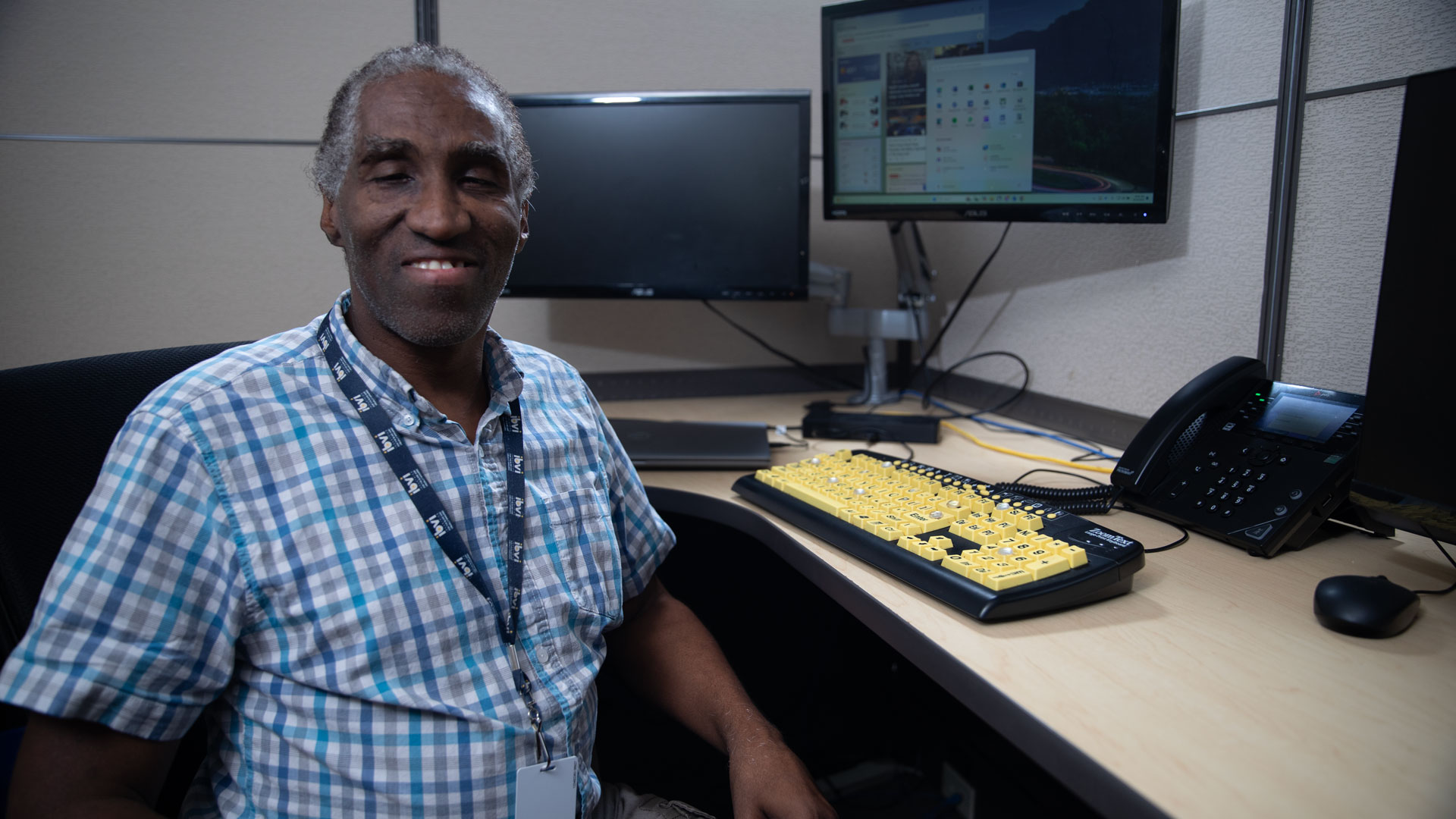A look into the difference between what constitutes someone as visually impaired or blind
A question people ask often is, “What’s the difference between someone who is blind and someone who is visually impaired?” So, today, I sat down with our newest intern, Katie, to ask her some questions about the differences between visual impairment and blindness. She told me we should first start with the definitions of both.
What is the difference between visual impairment and blindness?
The definition of visual impairment is “a decrease in the ability to see to a certain degree that causes problems not fixable by usual means, such as glasses.” Blindness is “the state of being unable to see due to injury, disease or genetic condition.”
In the U.S., there are four terms used to describe different levels of vision impairment and blindness—partially sighted, low vision, legally blind and totally blind.
Partially sighted means a person has partial vision, either in one or both eyes.
Low vision refers to a severe visual impairment in which visual acuity is 20/70 or poorer in the better-seeing eye and cannot improve with glasses or contacts.

Legally blind means a person has a corrected vision of 20/200 in their best-seeing eye. If visual aids such as glasses can correct a person’s vision to 20/20, they are not considered legally blind.
Totally blind refers to a complete loss of sight.
While the phrase “visual acuity” may seem new to you, Katie explained that it is something most of us are familiar with. It is a measurement determined by the letter chart tests we take when we get our eyes checked; the number represents your eyes’ clarity or sharpness. For example, a person with a visual acuity measurement of 20/70who is 20 feet away from an eye chart sees what a person with 20/20 vision can see from 70 feet away.
Does a totally blind person with their eyes open see the same thing as a sighted person with their eyes closed?
Most people who are born blind say they see nothing. But, people who previously had vision before going blind say they usually see black and sometimes faded shapes, flashes of light or color, and experience vivid hallucinations.
From what distances are visually impaired people able to see?
It depends on the type of visual impairment someone is living with. For Katie and probably many others, objects are only visible from a certain distance—this distance could be as close as right in front of the eye or as far as 20 feet away. From a distance, objects may be blurry or faint. Some people may also see in tunnel vision, which is the loss of peripheral vision. Visual impairment can improve with glasses or other types of adaptive technology such as CyberEyez.
Can blind or visually impaired people still lead normal lives?
Absolutely! Many blind and visually impaired people adjust to their disabilities. Being visually impaired or blind doesn’t mean they can’t live normal lives just like anyone else. They work, go to the movies, explore new parts of town, and even win national talent contests.
Being blind or visually impaired isn’t about what they can or cannot do. It’s about learning the best way to accomplish whatever goals they set out to achieve.


